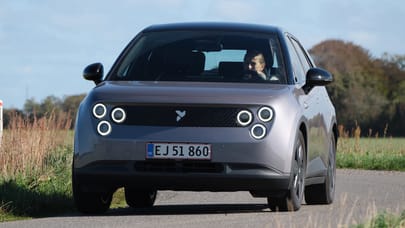
Euro NCAP wants to see less intrusive ADAS systems and more physical buttons in cars
Major changes to safety testing procedure could result in less bugbears for drivers
The extremely safe folks over at Euro NCAP have announced “major” changes to how they evaluate the safety of road cars – including the effectiveness of driver assistance systems in the “real world” and the availability of physical buttons for commonly used functions.
This is Extremely Good News. Quite possibly the best news you’ll hear today, in fact, because both have been major bugbears for several years now. NCAP says it’s the biggest shakeup since it first introduced the overall rating system in 2009.
The new rating system will be built around four new “key” cornerstones: safe driving, crash avoidance, crash protection and post-crash safety. It will go into effect in 2026.
And it'll start with those driver assistance systems, which NCAP notes “have faced criticism for annoying warnings or intrusive interventions”. That’s putting it lightly. There will also be greater focus on evaluating these in the real world, as opposed to the test track.
NCAP will award higher scores to driver monitoring technologies that “maintain attention and engagement behind the wheel”, including eye and head tracking systems that can detect if the driver is under the influence of drugs or alcohol.
And as also nodded to above, the testing process will now consider “the placement, clarity, and ease of use of essential controls”, in response to consumer feedback that suggests they can reduce distraction. Maybe carmakers will finally return to the good old days of proper physical switchgear that we’ve long been crying out for.
Other changes include testing on the “smoothness and intuitiveness” of crash prevention technologies, such as autonomous emergency braking and lane keep assist.
And NCAP will also introduce new post-crash requirements, including ensuring that electric door handles remain operable after an accident, while electric vehicles must be able to “correctly manage the isolation" of their batteries to prevent fire risk.
Top Gear
Newsletter
Thank you for subscribing to our newsletter. Look out for your regular round-up of news, reviews and offers in your inbox.
Get all the latest news, reviews and exclusives, direct to your inbox.
Trending this week
- 2026 TopGear.com Awards
The very best cars of the year: welcome to the 2026 TopGear.com Awards








